How to Use AirPods as Hearing Aids
Apple’s new AirPods provide hearing assistance for seniors with mild hearing loss.
SeniorLiving.org is supported by commissions from providers listed on our site. Read our Editorial Guidelines
Table of Contents
Key Takeaways
- Apple has introduced Apple AirPods Pro 2 and AirPods 4. The AirPods Pro 2 is designed with secure in-fit, stellar noise cancellation, great sound quality, and a USB-C charging case. The AirPods 4 has an open ear design and a separate model that comes with Active Noise Cancellation (ANC).
- AirPods have a feature called Live Listen that helps drown out background noise and amplify sounds.
- For those with mild hearing loss, the Live Listen feature can help you hear better in noisy environments without paying for a pair of hearing aids.
Many people with hearing loss say high prices keep them from getting hearing aids, and others worry about a negative stigma around hearing loss. Whatever the reason, millions of people in America are struggling with their hearing.
Luckily, for many older adults with mild hearing loss, wireless earbuds like AirPods can be used as an assisted listening device when paired with a smartphone. They are cheaper than hearing aids, and the wearer doesn’t have to let anyone know that they’re using the devices to amplify sounds. Inexpensive and discreet? We like the sound of that.
Apple fans have even more options with the launch of the newest generation of Apple AirPods. The U.S. Food and Drug Administration authorized the first over-the-counter hearing aid software to be used with the Apple AirPod Pro 2 for those with mild to moderate hearing loss.
In this guide, we’ll cover Apple’s latest features for hearing loss, along with our resident audiologist Dr. Ruth Reisman’s thoughts on this new technology and who it’s best for. We’ll also show you how to set up and use your AirPods to help with hearing step by step.
Apple’s New AirPods Hearing Aid Features
Apple has unveiled three new AirPods versions: AirPods 4, AirPods 4 with ANC, and AirPods Pro 2. The AirPods 4 improves on the previous model with an open ear design, a new acoustic architecture, and an upgrade to an H2 chip. It also comes with a smaller charging case that has USB-C charging. With AirPods 4 you can get a clear, immersive experience, have hands-free calls, and easy access to Siri. The AirPods 4 are great for users on a budget who don’t require ANC, wireless charging, or the advanced features of the AirPods Pro 2.
While the AirPods 4 with ANC look like the AirPods 4 from the outside, they are different. The lightweight case of the AirPods 4 ANC supports wireless charging and includes a speaker for Find My location tracking. That model also has a USB-C port for charging, and it can be recharged with an Apple Watch charger or a standard Qi charger.
FYI: With Siri, you can nod your head yes or shake your head no when Siri asks if you want to answer an incoming call, hear a text message, or manage a notification. So interacting with Siri is easy, even when you don’t want to use your voice.
The AirPods Pro 2 have excellent noise cancellation and sound quality and can perform a five-minute hearing test and give you the results. For mild or moderate hearing loss, the AirPods Pro 2 can be used as hearing aids and adjusted to your specific hearing loss. Hearing Health features are available with a free software update. Hearing loss data from audiologist-performed tests can also be used.
All three models have hands-free Siri control and an IP54 rating for dust, sweat, and water resistance.
An Audiologist’s Take on AirPods as Hearing Aids
So, what do audiologists have to say about using the new AirPods as hearing aids? Dr. Ruth Reisman, a licensed audiologist on our panel of experts, says, “This feature is being marketed as an over-the-counter (OTC) hearing device, which is only intended for individuals with mild to moderate hearing loss … I think [these AirPods] will be a great way to get people interested about their hearing health care. Now patients in need of support for their hearing will get help and start on their hearing health journey soon.”
Did You Know? More than 30 million Americans experience some hearing loss, which may be caused by aging, loud sound exposure or other factors.1 But, less than 20 percent of people who would benefit from a hearing aid wear one, even though untreated hearing loss can lead to additional health problems.2
But, Dr. Reisman notes that “After trying the hearing modes in AirPods before, I have found they do help amplify sounds, but the noise management is not as sophisticated as prescription hearing aids. Additionally, these earbuds will not accommodate more severe or complex hearing losses.”
Dr. Reisman also points out the appearance of the devices may be uncomfortable in a social or professional environment. Plus, the battery life can be fairly limited and won’t provide a full day of usage for those requiring ongoing support. However, she comments, “There will be a lot of appeal for those individuals who have hearing difficulties and already own a set of AirPods.”
AirPod Features
AirPods Pro 2 ($249):
- In-ear fit
- Active Hearing Protection, Hearing Test, and a clinical-grade Hearing Aid feature
- Six-hour battery life (earbuds); 24 hours with charging case
- Case with an IPX4 water resistance rating for showers and sweat with built-in speaker
- Wireless charging case
- H2 processor
- Equipped with ANC
- On ear controls and Siri
AirPods 4 ($129):
- Open ear design
- Five-hour battery life; 30 hours with charging case
- H2 processor
- USB-C charging cable
- On ear controls and Siri
AirPods 4 with ANC ($179):
- Open ear design
- Four-hour battery life; 25 hours with charging case
- H2 processor
- Equipped with ANC
- Wireless charging
- Apple Watch charger or Qi-certified charger
- Built in speaker for Find My chimes
- On ear controls and Siri
If you have an older pair of AirPods, there are still some features that can be useful for mild hearing loss. We'll take a closer look at how older version AirPods can be used as hearing aids below.
Can AirPods Be Used as Hearing Aids?
AirPods utilize a feature called Live Listen that uses your iPhone as a microphone. Live Listen helps drown out background noise and amplify sound so you can hear better in a crowded space or hear someone speaking across the room more clearly. If you ever have trouble hearing someone at dinner in a noisy restaurant, this feature could benefit you.
While this feature helps you use your AirPods to enhance hearing, it does not replace a hearing aid. Hearing aids do more to amplify sound and are highly specific to your particular type of hearing loss, ear anatomy, and needs. An audiologist can help you determine what is right for you. For those with more severe hearing loss, getting the right equipment is extremely important; people who let hearing loss go untreated are at a greater risk for depression and dementia.3
If you can’t afford hearing aids and have mild hearing loss, AirPods Pro can help amplify sounds and enhance hearing at a fraction of the cost.
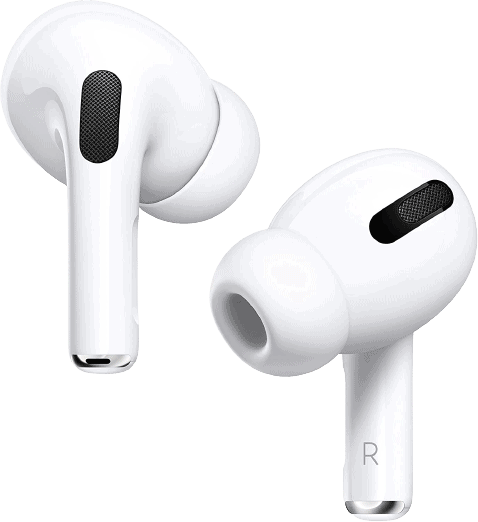
What Devices are Compatible with Live Listen?
To use Live Listen, your iPhone or iPad must use iOS or iPadiOS 14.3 or later. To check whether your software has the necessary updates, do the following:
Step 1. Go to “Settings.”
AirPods – Open “Settings”
Step 2. Click “General.”
Airpods – Click “General”
Step 3. Tap “Software Update.”
AirPods – Click “Software Update”
Step 4. Check to see what operating system your device is using.
AirPods – Check your software
Step 5. If you need to, upgrade by tapping “Download and Install.”
In addition to the right software, you’ll also need a pair of AirPods, AirPods Pro, AirPods Max, or Powerbeats Pro.
Did You Know? There are several types of listening devices and hearing aids that can be paired with an iPhone. For detailed instructions on connecting your hearing aids to an iPhone, view our iPhone and hearing aid setup guide.
How to Use AirPods as Hearing Aids with the Live Listen Feature
Check out the video below with our Editor-in-Chief, Jeff Hoyt, as he walks through the steps to use AirPods as hearing aids. We’ve also included a step-by-step guide in the content below!

To use Live Listen with your iPhone or iPad, you’ll first need to add it to your “Control Center,” which is the screen meant to house your most used features.
Step 1. Go to your settings again and tap “Control Center.”

AirPods – Tap “Control Center”
Step 2. Scroll down to find the “Hearing” icon and tap the green “+” sign next to it.
AirPods – Add the Hearing icon
Step 3. Make sure the hearing icon is now up in the “Included Controls” section.
AirPods – Double-check that the Hearing icon was added
Step 4. Tap “Settings” at the top of your screen to save the change.
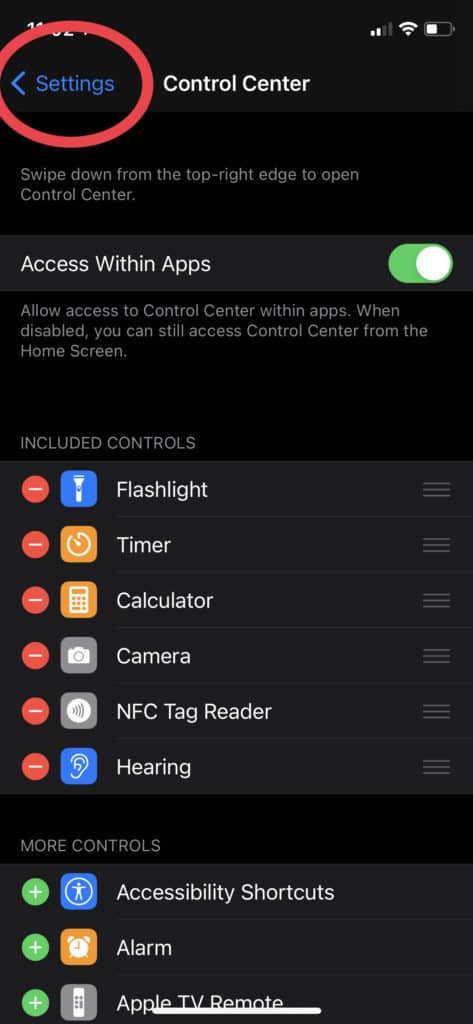
AirPods – Tap out of your settings to save changes
Now that you’ve added Live Listen to your Control Center, here’s how to use the feature.
Step 1. Connect your wireless earbuds to your phone and open your settings. Tap “Bluetooth.”
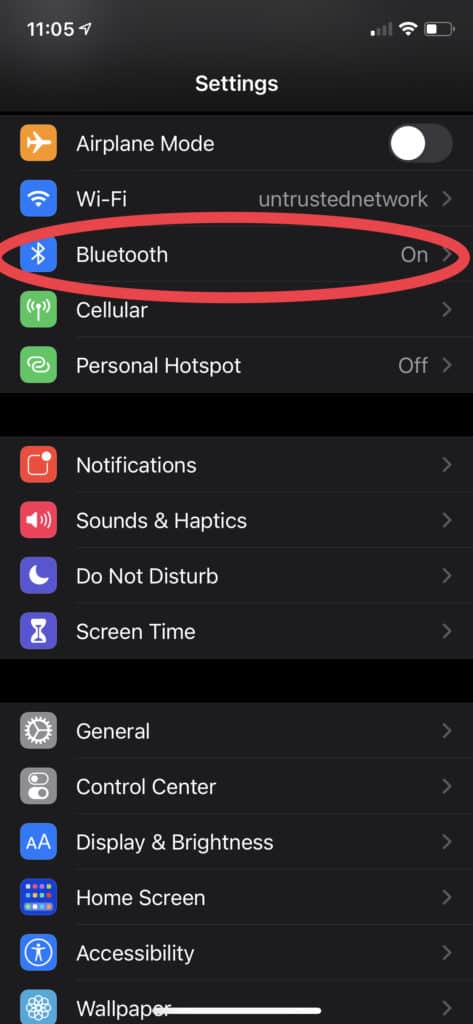
AirPods – Turn on Bluetooth
Step 2. Tap your wireless listening device so that it reads “Connected.”
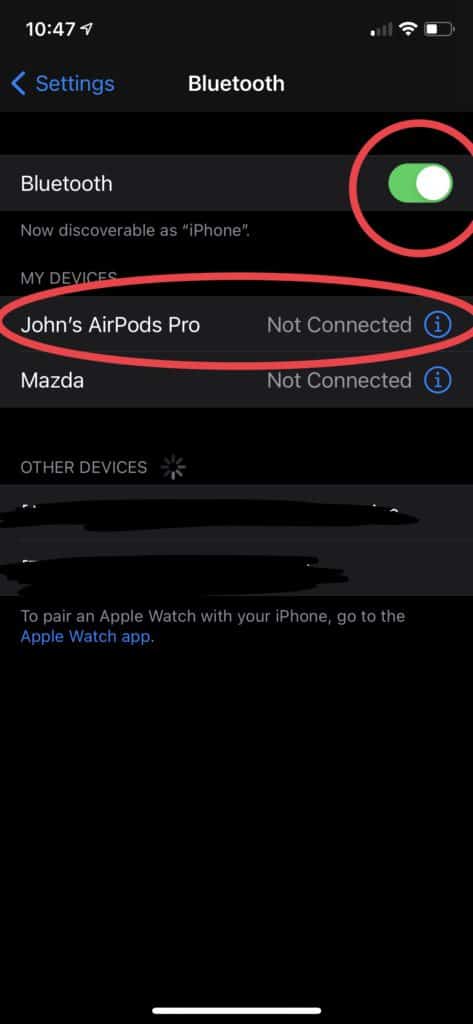
Connect your AirPods to your iPhone
Step 3. Open your Control Center and check that the hearing icon was added. To access the Control Center, either:
- Swipe down from the top right corner of your screen (iPhone X and later)
- Swipe up from the bottom of the screen (iPhone SE, iPhone 8, and earlier)
Step 4. Tap on the hearing icon.
AirPods – Accessing the Hearing icon in the Control Center
Step 5. Tap where it says “Live Listen.” This will turn Live Listen from “Off” to “On.”
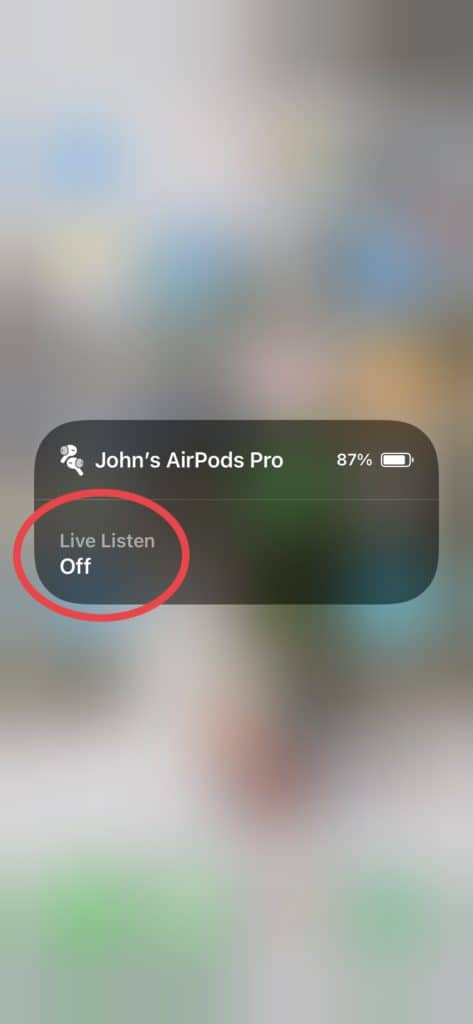
AirPods – Turn Live Listen on
Step 6. Put your phone in front of whatever sound you want to hear and adjust the volume to where you need it.
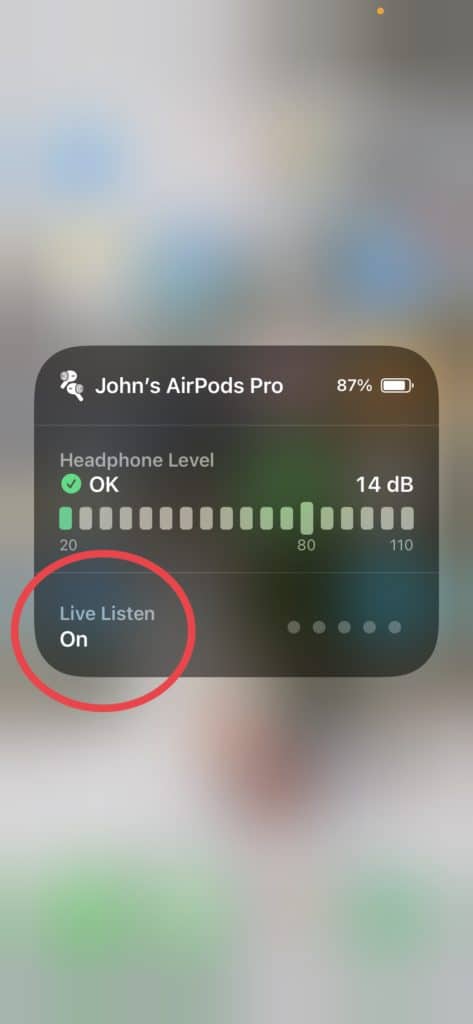
AirPods – Turn off Live Listen
Step 7. Continue using your iPhone as usual by tapping out of the box and tapping or swiping out of the control panel.
Pro Tip: While Live Listen is on, your phone will measure the volume of what you listen to by telling you the decibels, or dB. You can use this feature to make sure you aren’t listening to anything too loud for too long, which might further damage your hearing. Damage to your hearing can start at just 80dB when exposed for two hours.3 At 100dB, damage can happen in as little as 15 minutes.
Need Help Finding the Right Hearing Aid?
Answer a few easy questions to find the hearing aid that’s right for you.
How to Turn Off the Live Listen Feature
To turn off Live Listen, simply:
Step 1. Open your Control Center by either:
- Swiping down from the top right corner of your screen (iPhone X and later)
- Swiping up from the bottom of the screen (iPhone SE, iPhone 8, and earlier)
Step 2. Tap the Hearing icon.
AirPods – Accessing the Hearing icon in the Control Center
Step 3. Tap “Live Listen” to switch the mode from “On” to “Off.”

AirPods – Turn off Live Listen
Step 4. Return to your home screen by tapping out of the box and tapping or swiping out of the control panel. Happy listening!
Take Our Free Online Hearing Test
Wondering if you have hearing loss?
Grab your headphones and get an evaluation in minutes.
Axios. (2024) Hearing loss among Americans.
Healthy Hearing. (2019). Hearing loss statistics at a glance.
Consumer Reports. (2019). Hearing Aid Buying Guide.

